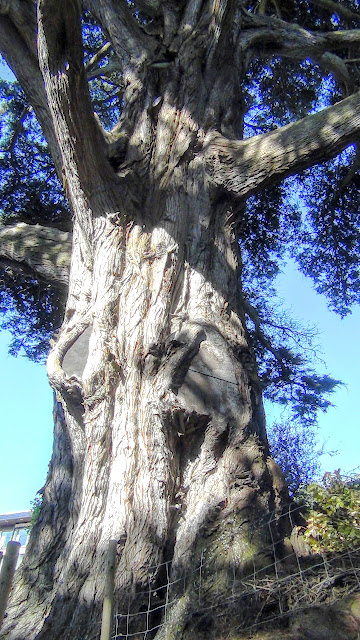My theme this year is wild flowers. Most of us will be aware of the flowers that grow in our gardens but what surprises me is how few of the wild flowers that I know.
I pass them every day but rarely look at them. Well this year will be different - even if many of them fall under the letter 'X' for unknown.
'Y' - Yellow Rattle, Yew
As we have nearly reached 'Z' I guess it's time to think about celebrating. What better way is there than to make a noise with a rattle.
I pass them every day but rarely look at them. Well this year will be different - even if many of them fall under the letter 'X' for unknown.
'Y' - Yellow Rattle, Yew
As we have nearly reached 'Z' I guess it's time to think about celebrating. What better way is there than to make a noise with a rattle.
 |
| Yellow Rattle (Rhinatus minor) |
This is actually a pernicious weed. and a semi-parasite, that grows on grasslands and in old meadows. It helps itself to minerals and water by means of its roots making contact with the roots of grasses and other plants.
The flowers appear from May to August, each one developing into a swollen capsule containing numerous large seeds. When the capsule is dry and the stem is knocked or shaken, the loose seeds inside make a rattling sound. This natural alarm clock was once used to signal the time for haymaking.
One of the tasks I have set myself is following the development of flowers from when they appear until they have faded away and turned to seed. Sometimes this has not been possible and I'm starting the other way around. The Yew tree is a marvellous example of this.
 |
| Berries on a Yew tree |
It was only last month that I wondered what the its flowers looked like.
 |
| Yew tree flowers on a local tree |
Not very obvious, are they?
 |
| Flowers on a churchyard tree |
There is an ancient tradition that the evergreen yew sheltered the first Christian missionaries to Britain - before churches were built - and this is why so many yew trees are found in our churchyards.
Last summer I found a magnificent yew in Cornwall just outside the village of St Mawgan. Because of where it was located I could not get all of it in one photo.
By the size of its trunk, it must be hundreds of years old. I'm left wondering whether it is a male or female tree.
Attributions:
Attributions:
- Yellow Rattle; Great Holland Pits, Essex, 30 May2004, ex en.wikipedia.org,by Sannse - CC BY-SA 3.0
- Common or English Yew, flowers on a male tree - St Mary's Churchyard, 19 February 2009, ex geograph.org.uk, by Trish Steel - CC BY-SA 2.0 generic



9 comments:
Hi Bob - fascinating information ... yes the rattle must be out for tomorrow! Well done ... and I didn't know anything about the Rattle and how it survives. The Yews are magnificent aren't they - that one at St Mawgan - absolutely stunning to see ... and must be perhaps a thousand years old .. those two side branches lopped off decades ago - who how enormous it was and is ... I'd never seen or noticed the flowers either ... cheers Hilary
I think few of us are so aware of the flowers of trees as of their fruits - with the possible exception of the Horse hestnut with its wonderful "candles". I believe the value of the yellow rattle in a meadow is its ability to bind the soil together and make the turf more stable.
Ann
That's some tree. Great information you know your horticulture...
Im blogging from Fill the cracks and Moondustwriter's Blog. Happy last dayzz of A to Zing!
awesome tree. I love trees.
His name is Fred...so of course he's a dude.
That yew is a fabulous tree Bob. I wonder if Hilary is right about the age. I figured Yarrow would come up today, obviously not. Never heard of the Rattle.
I was at St Mawgan again for a week until yesterday. I sure now I have had a second look at the tree that Hilary is right = 1000 years +.
A beautiful tree! And though the yellow rattle is a bothersome weed, it's pretty too.
I have never seen the rattle but it sounds like children would enjoy rattling them. Ancient trees are amazing.
Finding Eliza
Where I live, I'm accustomed to seeing the Yew as a bush, nothing like that 100+ year old tree.
Post a Comment